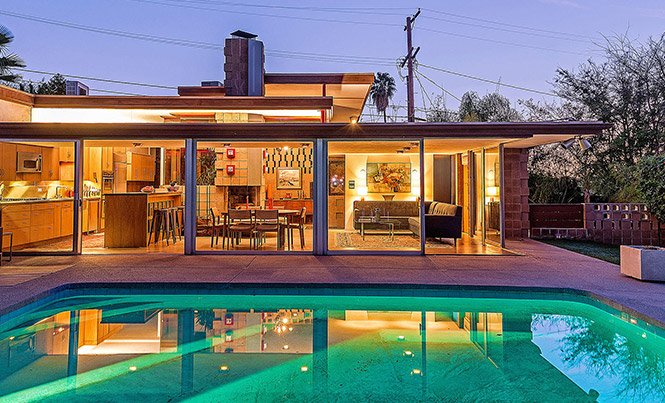
Neighborhood Spotlight: Glassell Park’s future looks greener and livelier
By Scott Garner for Los Angeles Times | Read the original article here
- – -
The massive, 36,000-acre Rancho San Rafael — a gift from the Spanish governor of California to Jose Maria Verdugo in 1784 — can fairly be called the mother of Northeast Los Angeles.
The neighborhoods that were carved from the hilly, scenic expanse of land to the east of the L.A. River include Atwater Village, Highland Park, Eagle Rock and Glassell Park.
Lost by the Verdugo family in foreclosure proceedings and snapped up by Andrew Glassell and Alfred Chapman — two Southern lawyers who had made their way west in the years before the Civil War — the rancho was then split by the men into 31 separate tracts in the Great Partition of 1871.
Glassell and Chapman ended up with fewer than 6,000 acres on the eastern banks of the rio, where the narrow alluvial plains of the Elysian Valley give way to the rolling landscape of the San Rafael Hills. Glassell built a hilltop home for himself and his family on the current site of Washington Irving Middle School and in 1888 founded the agricultural city of Orange.
When Glassell died in 1901, his family began selling off chunks of his holdings (in the 1920s they would sell the land that would become Forest Lawn), and as investors snapped up the acres they began to develop the tract that would bear his name.
Modest Craftsman bungalows began to sprout up along winding streets named after Glassell’s children, and in 1912 the burgeoning hillside community was annexed by the city of Los Angeles.
Because it was served by the Los Angeles Railway’s Eagle Rock line, the neighborhood was a convenient location for commuters who worked downtown or in the rail yards just north of the city. In 1923, the opening of the Southern Pacific Railroad’s Taylor Yard boosted growth in Glassell Park and further reinforced the neighborhood’s ties to the railroad.
Construction of the 2 Freeway, which cut the neighborhood in two in the early 1950s, signaled a shift to the suburbs that was taking place across the city. As many earlier residents followed the freeways out into the valleys (San Fernando and San Gabriel), Glassell Park became a popular destination for newly arrived immigrants from Latin America.
Today, Glassell Park is facing the demographic changes that come in the wake of increased property values and redevelopment of its historic homes and commercial corridors.
Neighborhood highlights
Bungalow heaven: Glassell Park’s charming bungalows and hillside vistas are a big draw for home buyers looking for historic character and classic California living.
Riverside: The old Taylor Yard has been transformed into Rio de Los Angeles State Park, and the city’s river revitalization project aims to reclaim even more land for green space.
Good eats: In keeping with its rustic roots, Glassell Park is home to a number of eateries that serve hearty, unpretentious offerings of everything from tamales to pub fare.
Neighborhood challenge
Managing change: As the Glassell Park real estate market heats up, the neighborhood could become the latest to wrestle with managing the effects of gentrification.
Expert insight
Alyssa Valentine, a listing agent with Courtney + Kurt Real Estate, has been working in Glassell Park for 11 years. She said she has recently noticed excitement brewing in the community.
“Glassell Park lacks some of the big commercial corridors of its neighbors like Highland Park and Mount Washington, so it’s traditionally been a sleepier area with a residential vibe,” Valentine said. “But as of late, there are more and more restaurants and cafes popping up.”
Valentine noted that there’s a wide variety of housing stock in the area. Because the value is a little better than in the surrounding neighborhoods, the market is hot.
“Glassell Park has a few pockets people aren’t as familiar with, so buyers should seek those out and be prepared to make plenty of offers,” she said.
Market snapshot
In the 90065 ZIP Code, based on 26 sales, the median sales price in July for single-family homes was $705,000, according to CoreLogic. That was a 2.8% increase in median sales price year over year.
Report card
Schools inside the boundaries include Fletcher Drive Elementary and Glassell Park Elementary, which scored 746 and 742, respectively, in the 2013 Academic Performance Index.
Bright spots in the area include Delevan Drive Elementary, which scored 915. Mount Washington Elementary scored 915, and Cerritos Elementary scored 874.